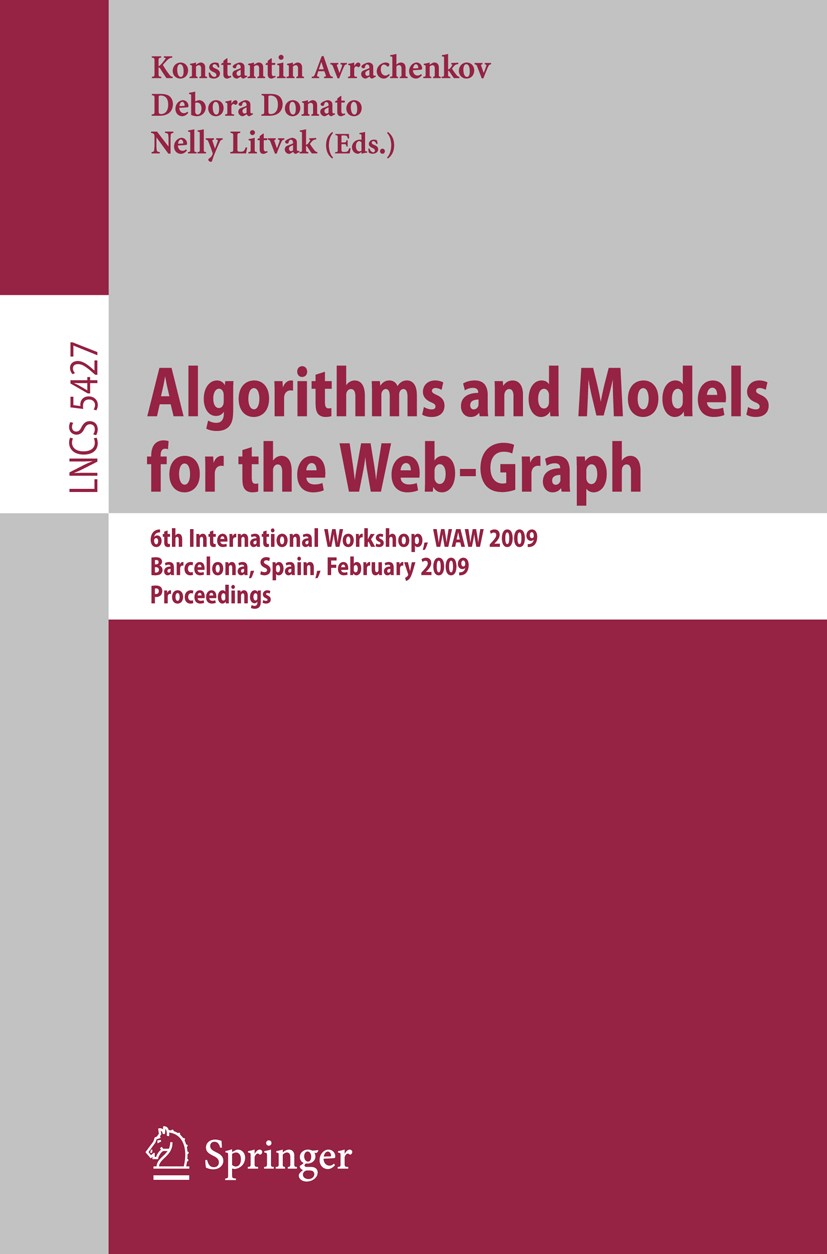| 期刊全称 | Algorithms and Models for the Web-Graph | | 期刊简称 | 6th International Wo | | 影响因子2023 | Konstantin Avrachenkov,Debora Donato,Nelly Litvak | | 视频video | http://file.papertrans.cn/154/153189/153189.mp4 | | 学科分类 | Lecture Notes in Computer Science | | 图书封面 |  | | 影响因子 | This book constitutes the refereed proceedings of the 6th International Workshop on Algorithms and Models for the Web-Graph, WAW 2009, held in Barcelona, Spain, in February 2009 - co-located with WSDM 2009, the Second ACM International Conference on Web Search and Data Mining. The 14 revised full papers presented were carefully reviewed and selected from numerous submissions for inclusion in the book. The papers address a wide variety of topics related to the study of the Web-graph such as theoretical and empirical analysis of the Web graph and Web 2.0 graphs, random walks on the Web and Web 2.0 graphs and their applications, and design and performance evaluation of the algorithms for social networks. The workshop papers have been naturally clustered in three topical sections on graph models for complex networks, pagerank and Web graph, and social networks and search. | | Pindex | Conference proceedings 2009 |
The information of publication is updating

|
|
 |Archiver|手机版|小黑屋|
派博传思国际
( 京公网安备110108008328)
GMT+8, 2025-11-12 21:47
|Archiver|手机版|小黑屋|
派博传思国际
( 京公网安备110108008328)
GMT+8, 2025-11-12 21:47


